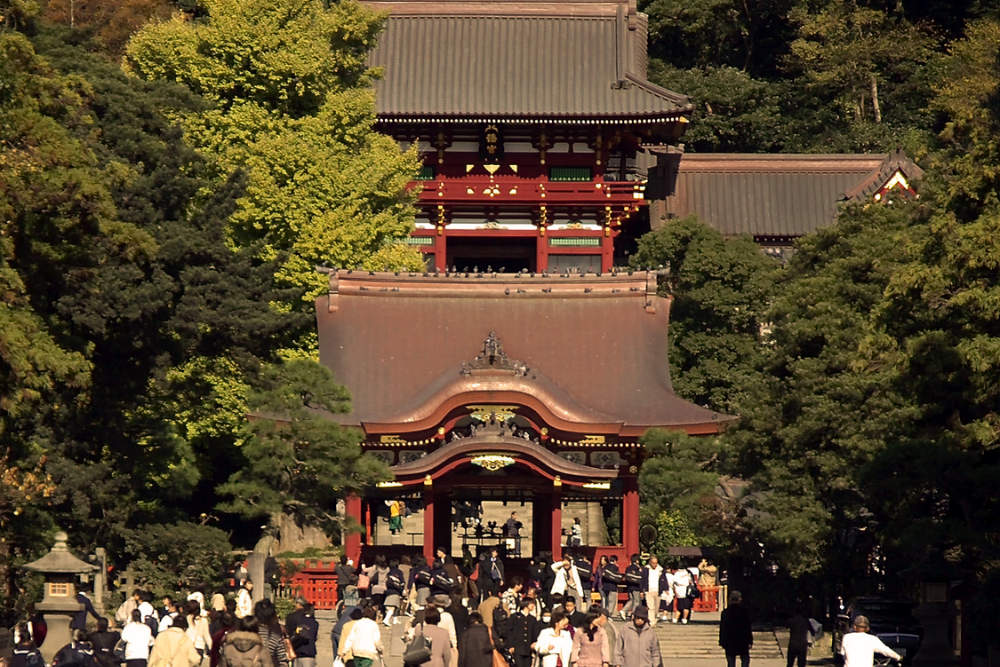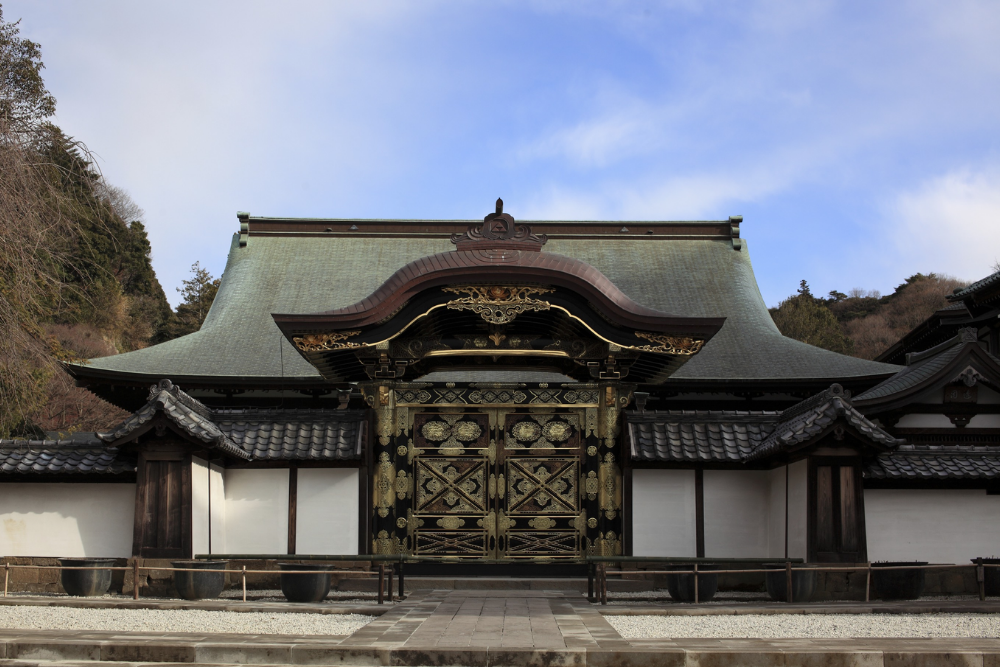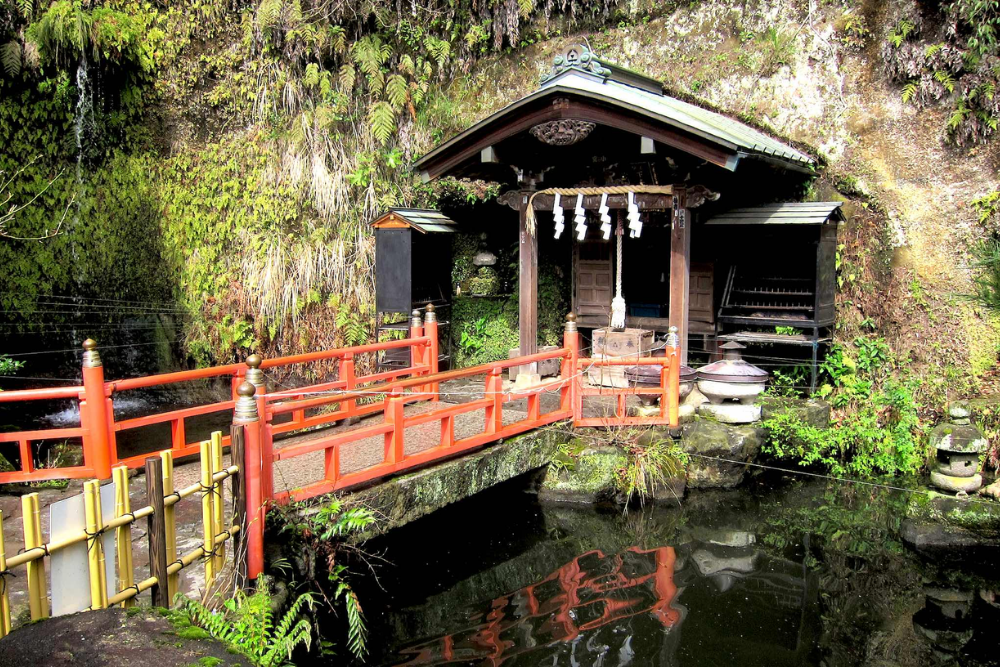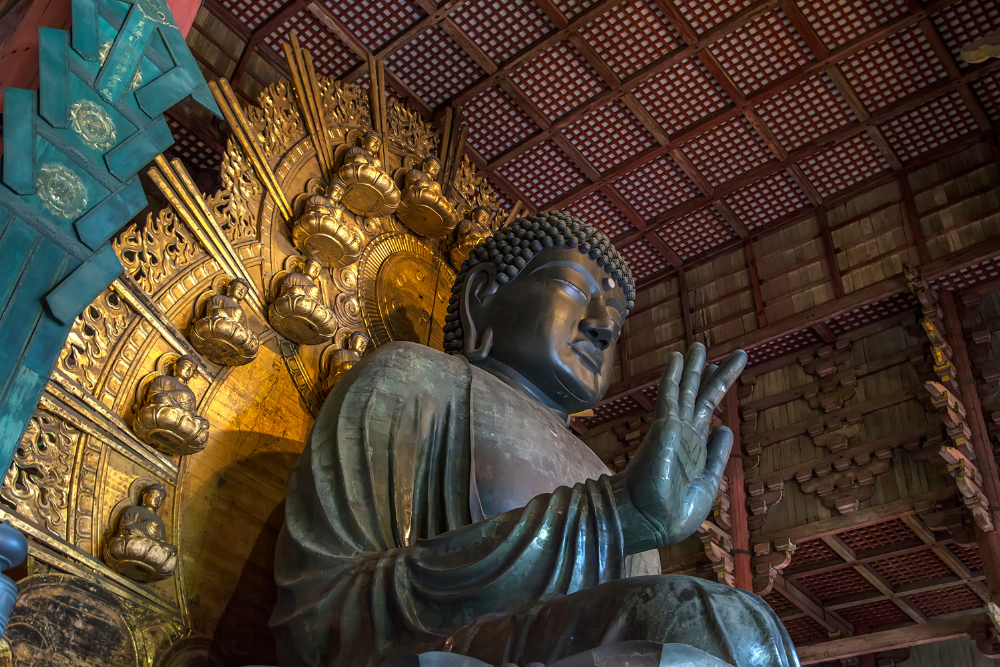Introduction
Kamakura, a historic coastal city just an hour south of Tokyo, was once the political center of Japan during the Kamakura shogunate (1185–1333). Today, it is known for its serene temples, grand shrines, and scenic landscapes, making it one of the best day-trip destinations from Tokyo. Whether you’re interested in Buddhist temples, Shinto shrines, or simply a peaceful escape, Kamakura offers a glimpse into Japan’s rich spiritual heritage.
Here’s a guide to the best shrines and temples to visit in Kamakura, each offering unique architecture, history, and natural beauty.
1. Kōtoku-in (The Great Buddha of Kamakura)
Famous for: The Daibutsu, a massive outdoor bronze Buddha statue.
Kōtoku-in is home to the Great Buddha of Kamakura (Kamakura Daibutsu), one of Japan’s most iconic religious monuments. This 13.35-meter (43.8 ft) tall bronze statue, dating back to the 13th century, once sat inside a grand temple hall, but a tsunami in the 15th century washed the structure away. Since then, the Buddha has stood in the open air, creating an awe-inspiring sight.
- Why Visit:
- One of the most famous Buddha statues in Japan.
- You can step inside the hollow statue for a closer look at its craftsmanship.
- A peaceful temple environment surrounded by trees.
- How to Get There:
- A 10-minute walk from Hase Station (Enoden Line).
2. Hase-dera (The Temple of Flowers)
Famous for: Stunning seasonal flowers and breathtaking ocean views.
Hase-dera is a beautiful hillside temple known for its seasonal gardens, hydrangeas, and panoramic views of Sagami Bay. The temple is home to a massive wooden statue of Kannon, the goddess of mercy, standing 9.18 meters (30 ft) tall. The grounds feature charming pathways, small caves, and a peaceful pond.
- Why Visit:
- One of the best places in Kamakura to see hydrangeas (June) and autumn leaves (November).
- Features a Benten-kutsu Cave, filled with statues of Benzaiten, the goddess of music.
- Offers stunning views of the coastline from the observation deck.
- How to Get There:
- A 5-minute walk from Hase Station (Enoden Line).
3. Tsurugaoka Hachimangū (Kamakura’s Most Important Shrine)
Famous for: Its grand entrance, scenic approach, and historical significance.
Tsurugaoka Hachimangū is Kamakura’s most important Shinto shrine, dedicated to Hachiman, the patron deity of samurai. Founded in 1063, it played a key role in the city’s history as the spiritual heart of the Kamakura Shogunate. The shrine is located at the top of a grand stone staircase, offering a sweeping view of the city.
- Why Visit:
- A historically significant site for understanding samurai-era Japan.
- The approach through Wakamiya Ōji Avenue, lined with cherry blossoms in spring.
- Seasonal events, including the Reitai-sai Festival (September) featuring Yabusame (horseback archery).
- How to Get There:
- A 10-minute walk from Kamakura Station (JR Yokosuka Line).
4. Engaku-ji (A Zen Sanctuary in the Mountains)
Famous for: Its Zen atmosphere and autumn foliage.
Engaku-ji, founded in 1282, is one of Kamakura’s most significant Rinzai Zen temples. Nestled in the forested hills near Kita-Kamakura Station, the temple is particularly beautiful during autumn, when the maple trees turn vibrant shades of red and orange.
- Why Visit:
- One of the best places in Kamakura to experience Zen Buddhism.
- Home to a massive bronze temple bell designated as a National Treasure.
- Serene atmosphere, making it perfect for meditation or quiet reflection.
- How to Get There:
- A 2-minute walk from Kita-Kamakura Station (JR Yokosuka Line).
5. Kenchō-ji (The Oldest Zen Temple in Kamakura)
Famous for: Its impressive wooden gate and Zen gardens.
Founded in 1253, Kenchō-ji is the oldest Zen temple in Kamakura and is regarded as the first-ranked of the Five Great Zen Temples of the city. The temple features an impressive Sanmon Gate, a massive Buddha hall, and a peaceful Zen garden designed by Muso Soseki, a famous Zen master.
- Why Visit:
- Experience authentic Zen culture and architecture.
- Walk up to Hansobo Shrine, where Tengu (mythical creatures) statues guard the mountain path.
- Offers hiking trails leading to spectacular viewpoints over Kamakura.
- How to Get There:
- A 15-minute walk from Kita-Kamakura Station (JR Yokosuka Line).
6. Meigetsu-in (The Hydrangea Temple)
Famous for: Hydrangeas in June and its famous round window.
Meigetsu-in is often called the Hydrangea Temple because of its stunning blue hydrangea gardens that bloom in June. The temple is also famous for its circular “Window of Enlightenment”, which perfectly frames the garden behind it.
- Why Visit:
- One of the most photogenic temples in Kamakura.
- Beautiful Zen rock gardens and bamboo groves.
- A tranquil, less crowded alternative to Kamakura’s larger temples.
- How to Get There:
- A 10-minute walk from Kita-Kamakura Station (JR Yokosuka Line).
7. Zeniarai Benzaiten (The Money-Washing Shrine)
Famous for: A cave shrine where people wash money for good fortune.
Zeniarai Benzaiten is a unique Shinto shrine built into a cave, where visitors wash their money in sacred spring water in the belief that it will double in value. The shrine was founded in 1185 by Minamoto no Yoritomo, the first shogun of the Kamakura period.
- Why Visit:
- Experience a fun and unusual ritual of washing money.
- A hidden spiritual retreat, tucked away in the hills of Kamakura.
- Surrounded by serene nature and tunnels carved into rock.
- How to Get There:
- A 25-minute walk from Kamakura Station or a hike from Sasuke Inari Shrine.
Conclusion
Kamakura is a city rich in spiritual history, stunning landscapes, and ancient traditions. Whether you’re drawn to the imposing Great Buddha of Kōtoku-in, the tranquility of Zen temples like Engaku-ji and Kenchō-ji, or the unique rituals at Zeniarai Benzaiten, there is something for everyone.
For first-time visitors, a combination of Tsurugaoka Hachimangū, Kōtoku-in, and Hase-dera provides a well-rounded experience of Kamakura’s religious and historical sites. For those seeking a quieter, more immersive experience, temples like Meigetsu-in and Engaku-ji offer Zen-like serenity.
A day trip to Kamakura is a journey through Japan’s past, its religious traditions, and breathtaking nature, making it an unforgettable destination.












